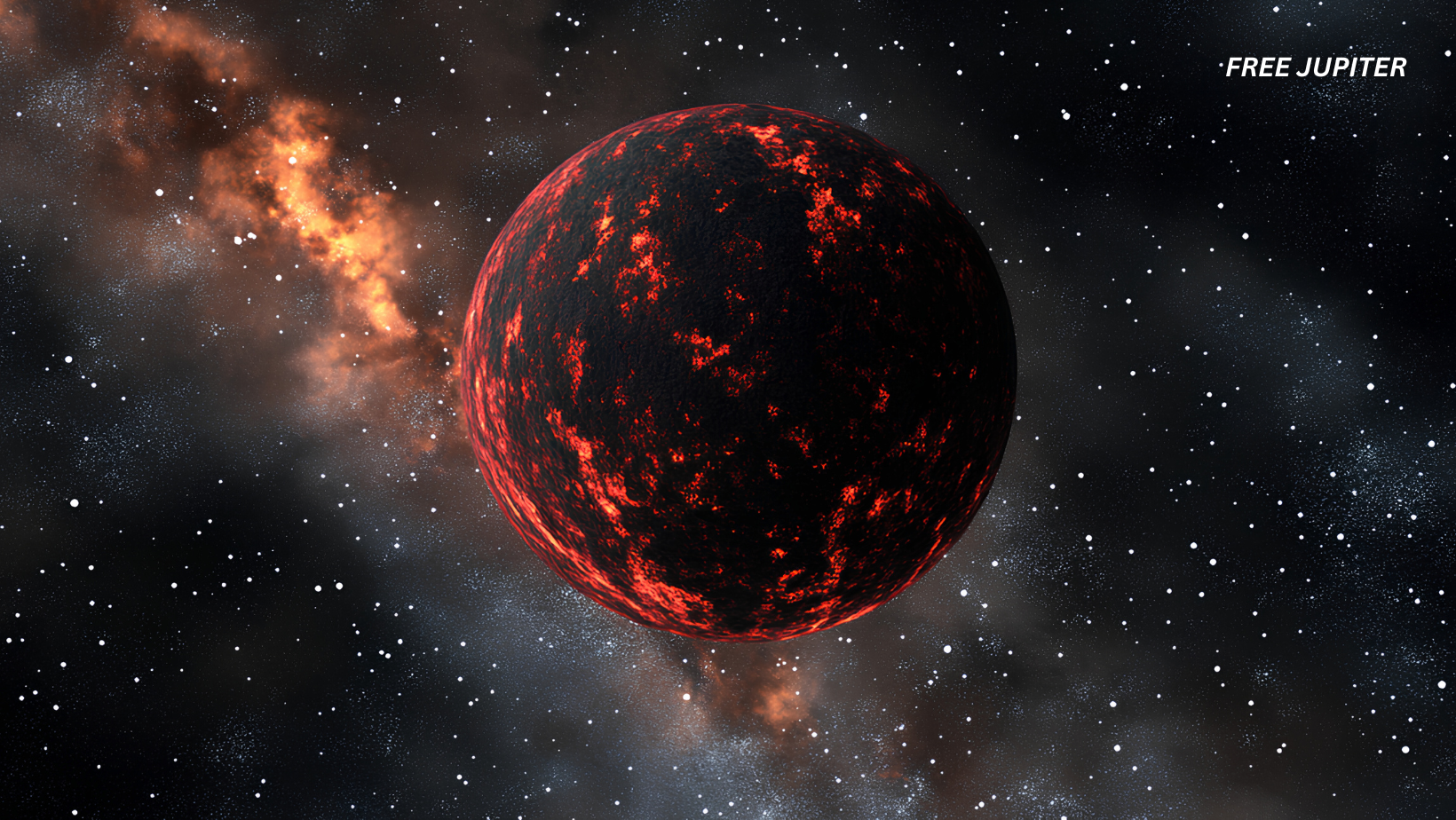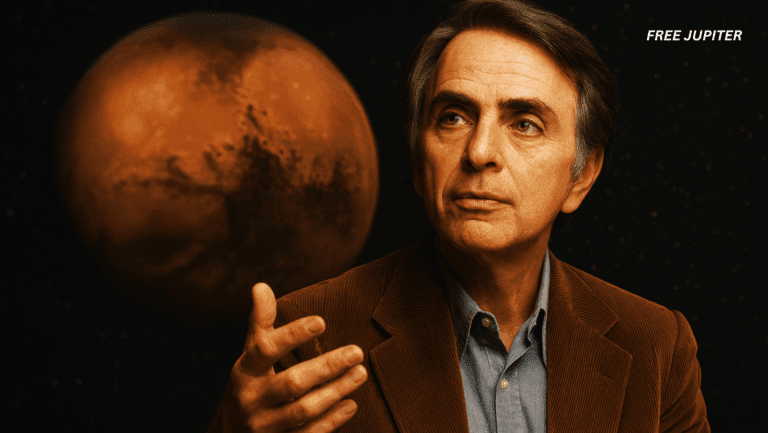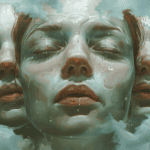Note: FreeJupiter.com shares general info for curious minds 🌟 Please fact-check all claims—and always check health matters with a professional 💙
When most people imagine planets, they picture familiar scenes: worlds circling a star, basking in its light, locked into steady orbits within a solar system. Earth has the Sun, Jupiter has dozens of moons, and everything seems neatly tied together in cosmic order. But the universe, as it turns out, is not quite so tidy. There are planets that don’t belong to any solar system at all. These are the rogue planets—celestial wanderers adrift in the galactic wilderness.
And here’s where things get truly strange: new research suggests that these lonely planets, despite lacking a star, might be creating their own moons. Imagine a world drifting endlessly through the void, yet carrying a retinue of moons as if it were a king without a kingdom.
This possibility isn’t just science fiction anymore. Thanks to the extraordinary sensitivity of the James Webb Space Telescope (JWST), astronomers have uncovered evidence that rogue planets could host disks of material capable of giving rise to moons, rings, or even miniature versions of solar systems.
Meet the Cosmic Drifters: What Are Rogue Planets?
Rogue planets, also called free-floating planetary-mass objects (FFPMOs), are worlds that drift through space without orbiting a star. Some are massive—five to ten times the size of Jupiter—while others might be smaller.
There are two main theories for how these starless planets come into being:
- Ejected Planets – In young star systems, gravitational chaos is common. Newborn stars tug at one another, and planetary orbits can become unstable. Some unlucky planets are flung out of their systems entirely, banished to wander space forever.
- Born in Isolation – Another possibility is that rogue planets form much like stars, directly from collapsing clouds of gas and dust. In this case, they never belonged to a star system to begin with.
Astronomers have long known about these cosmic loners, but for years they were little more than curiosities. Without a nearby star to light them up, rogue planets are faint and notoriously difficult to detect. The JWST, however, has changed the game.
Read more: Black Holes That Turn Matter Into Dark Energy May Solve ‘Cosmic Hiccups’ Mystery
How JWST Pulled Back the Curtain
The James Webb Space Telescope is the most advanced observatory humanity has ever placed in space. Unlike visible-light telescopes, JWST is tuned to the infrared spectrum, allowing it to detect the faint heat signatures of distant and cold objects—including rogue planets.
When astronomers turned JWST toward several free-floating giants in the Orion Nebula, they didn’t just see lonely planets. They spotted something even more intriguing: disks of dust and gas encircling them.
These disks weren’t random collections of debris. They contained crystalline silicates and hydrocarbons—materials essential in the formation of moons and planets. In other words, the raw ingredients for a miniature planetary system were floating around these starless giants.
Why Disks Are a Big Deal
To understand the significance, we need to look at how regular solar systems form.
- A star is born when a cloud of gas and dust collapses under its own gravity.
- As the young star spins, leftover material flattens into a disk around it.
- Within that disk, dust grains stick together, forming clumps that eventually grow into planets.
Now, astronomers are finding that rogue planets can also have these surrounding disks. This suggests they might be capable of forming moons in much the same way that stars form planets.
The disks detected around rogue planets are smaller and less massive than those around stars, but the process could be very similar—only on a reduced scale. It’s as if the cosmos is recycling its recipe for making worlds, applying it not just to stars but to wandering planets as well.
The Case of the Orion Nebula
The Orion Nebula is one of the universe’s most photogenic regions, often called a stellar nursery. It’s teeming with newborn stars, swirling clouds of gas, and turbulent energy. It also turns out to be a hotbed for rogue planets.
A research team led by astrophysicist Belinda Damian of the University of St Andrews used JWST to observe eight rogue planets in this region. Their findings were astonishing.
- The disks around these planets contained silicate grains—tiny mineral particles that can grow into larger rocky bodies.
- Some of the silicates had undergone crystallization, meaning they had been heated and transformed into ordered, glass-like structures.
- Evidence of hydrocarbons (carbon-rich molecules) was also present, hinting at the potential for complex chemistry.
Together, these features suggest active processes that could eventually lead to the formation of moons or rings.
Read more: In 1975, a Soviet Lander Melted on Venus After Snapping the Very First Photo
Could Rogue Planets Really Have Moons?
If the disks around rogue planets behave like those around stars, then the material within them could clump together into moons. These moons would orbit their planet just as our Moon orbits Earth, or as the dozens of moons orbit Jupiter and Saturn.
The idea of a rogue planet carrying a family of moons is both haunting and beautiful. Imagine a world the size of Jupiter drifting through the void, trailed by a glowing moon or two, maybe even a shimmering ring system like Saturn’s. No star, no daylight—only the faint glow of the planet itself reflected off its companions.
It’s worth noting that astronomers have not yet confirmed a single exomoon (a moon outside our Solar System), although several candidates have been suggested. If rogue planets turn out to have moons, they could provide some of the first solid evidence that moons exist elsewhere in the cosmos.
What This Means for Planetary Science
The discovery has major implications. For decades, astronomers assumed that complex planetary systems could only form around stars. But now, it seems that starless worlds can also be architects of their own miniature systems.
As Damian explains:
“These discoveries show that the building blocks for forming planets can be found even around objects that are barely larger than Jupiter and drifting alone in space. This means that the formation of planetary systems is not exclusive to stars but might also work around lonely starless worlds.”
In other words, nature is more flexible than we thought. The universe doesn’t need the warmth and gravity of a star to craft moons.
The Mystery of Life on Rogue Worlds
This raises an even more tantalizing question: could rogue planets with moons potentially host life?
At first glance, the idea seems far-fetched. Without a star, rogue planets receive no sunlight and should be freezing. Yet some scientists suggest they might retain enough internal heat—from radioactive decay or leftover energy from their formation—to keep subsurface oceans warm.
If such a planet had moons, tidal heating (the stretching and squeezing caused by gravity) could also generate warmth. We see this in our own Solar System: Jupiter’s moon Europa and Saturn’s moon Enceladus both have subsurface oceans kept liquid by tidal heating, despite being far from the Sun.
Could a rogue planet with moons host similar hidden oceans? If so, life might not need starlight at all—it could thrive in complete darkness, feeding off chemical energy.
A Universe of Cosmic Oddities
Rogue planets are already some of the strangest objects in astronomy. They break the rules of what we thought planets should be—no star, no orbit, just endless drifting. Now, the idea that they could nurture moons makes them even more extraordinary.
The universe, it seems, is full of improvisation. Where we expected order and structure, we find exceptions and surprises. Planetary systems might not be rare and fragile after all—they might spring up in places we never imagined, even around solitary worlds lost in the cosmic sea.
Read more: Astronomers Spot a New Kind of Supernova Unlike ‘Anything Ever Seen’ Before
Final Thoughts
The JWST has only begun to scratch the surface of what rogue planets can teach us. Each discovery challenges our assumptions and expands the boundaries of what is possible.
If rogue planets can build moons, then the universe is far more creative and resourceful than we imagined. These orphan worlds remind us that cosmic beauty doesn’t always need a star at its center.
Somewhere in the darkness, a planet may be wandering through interstellar space, cradling moons of its own—tiny companions lighting its eternal journey through the void.










